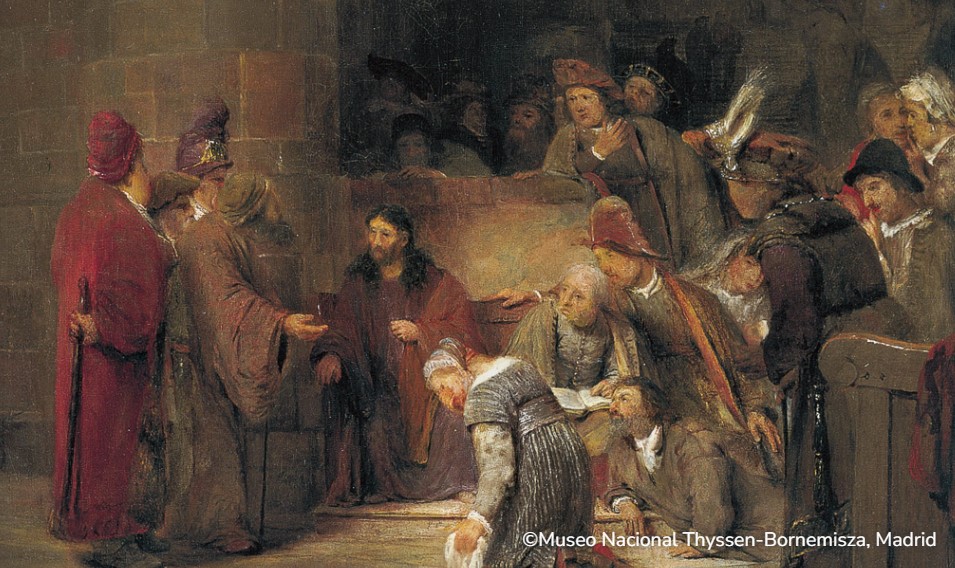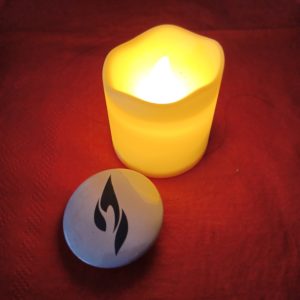Isaiah 43:16-21; Philippians 3:8-14; John 8:1-11
Last week, the first Reading was about the Israelites having fled the Egyptians and being led through the wilderness. In Isaiah 43 the Israelites have escaped the Babylonians. The Israelites have just been reassured that God loved them and that they had no reason to fear anything. Even when it was about overcoming waters or flames, God promised to protect the Israelites.
God had made pathways through the sea – this is an act that would have been inconceivable. There are no limits for God. God’s actions change everything. In Isaiah 18 God is quoted with: “Forget the former things; do not dwell on the past. See, I am doing a new thing!”
The passage from Isaiah is a passage of hope and evidence that God’s promise is steadfast. However, the chapter ends with complaints that, despite God having kept the promise, the Israelites didn’t keep their promise. They didn’t do what was prescribed in the Law, e.g. regarding offerings.
In Philippians, Paul writes about “knowing” God. Maybe the term could also be translated with experiencing God. Paul had experienced Jesus’ presence which changed his life.
The contrast is mentioned between the perfections of the Law and the new life with and through Jesus. Paul compares his goal to reach as much perfection as possible to a race that he is still running. There is a new path in front of us.
In the Gospel of John, Jesus had performed miracles, and the people were wondering who he was. Then he went on the Mount of Olives. We don’t know what he did there and how long he stayed, but as Jesus had just mentioned Moses who received the Law on a mountain, it might be that Jesus received the new Law on the Mount of Olives.
Jesus was teaching in the temple early in the morning; a new day had begun – a wonderful connection to the first two Readings where we heard about a “new thing” and hope for the future.

Moses wrote God’s Law on stone tablets. Jesus was writing in the sand while the scribes and pharisees were waiting for Jesus’ judgement on the woman they presented to him. There is much speculation among scholars of what Jesus wrote in the sand or in the dust. We don’t know it, and so the focus is even more on the act of writing rather than of what he was writing.
According to the Law, both man and woman have to be judged if they were caught in adultery. Only the woman was brought, which was obviously another trap for Jesus.
Surprisingly for those who wanted to test Jesus, Jesus didn’t judge the woman but rather reminded the people of the lack of perfection among all. What is the new way here? A new Law of mercy and compassion that can wipe sins just as the wind can wipe out the writing in the dust? Some sources say that it was permissible to write in the dust on Shabbat as the writing was not permanent.
Jesus shows compassion to all sides. He doesn’t rebuke the men who brought the woman. He doesn’t ask where the man was with whom the adultery was committed. He doesn’t fall into their trap.
As for the woman, he doesn’t judge her but rather forgives her based on the action of the men who brought her to him. Jesus would have been the only one without sin. He could have thrown the first stone, but he has compassion.
This is such a wonderful example of Jesus showing us how to react in a situation that seemed to be hopeless. The expected answers yes or no would have both had severe consequences for Jesus. It looked like he was trapped with no way out. Yet, Jesus found a solution.
Jesus trusted in God, the God of Israel who promised to be there for them and to overcome waters or flames… to find new paths, and new hope.
BM



